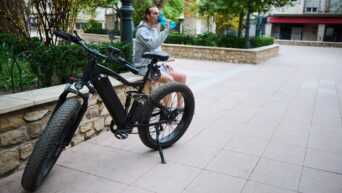
Credit: Unsplash
Punch a space rock with a rocket. It’s beautiful in its simplicity.
Despite the frequency at which we see gigantic, country-sized asteroids impacting the Earth and wiping out all life in movies and TV, such a thing has obviously not happened in millions of years. According to NASA’s most recent projections, there won’t be any malevolent space rocks heading our way for at least 100 years, if that. That being said, in the event an asteroid the size of Oregon does set our planet in its sights, it probably wouldn’t hurt to have a way to deal with it on standby. In the movies, this would usually be some kind of massive bomb (backed by Aerosmith’s “I Don’t Wanna Miss a Thing”), but researchers have decided on a more… eloquent solution.
NASA is currently in the planning stages of the Double Asteroid Redirection Test mission, or “DART,” the first true effort the agency’s undergone to develop an anti-asteroid defense system for the Earth. So what’s the actual plan? Well, they’re gonna shoot a rocket up into space, and that rocket will slam an asteroid with a powerful enough force to redirect it away from the Earth. In other words, they’re gonna punch it. Yes, really. NASA will be running the first DART test later this year, with the mini-moon Dimorphos as the target. The goal will be to knock Dimorphos away from the other moon rock with which it shares an orbit.
#NASA's #DART mission: Double Asteroid Redirection Test. Yes, it's a real thing, and this article looks at it in detail. The first DART spacecraft is to be launched in July, 2021 aboard a #SpaceX rocket. Sourced from the Space News and Facts website. https://t.co/knhvYJwI5n pic.twitter.com/Zpw7izWo29
— Paul Fulford (@Space_NewsFacts) April 3, 2021
“Up until now, we haven’t had too many options for what we might do if we found something that was incoming,” Johns Hopkins planetary astronomer Andy Rivkin told Vice News. “DART is the first test of how we might be able to deflect something without having to resort to a nuclear package, or sitting in our basements, waiting it out and crossing our fingers.”
When the rocket lands its punch, researchers will be standing by to monitor Dimorphos’ orbit, as well as determine if any potentially hazardous chunks break off.
































